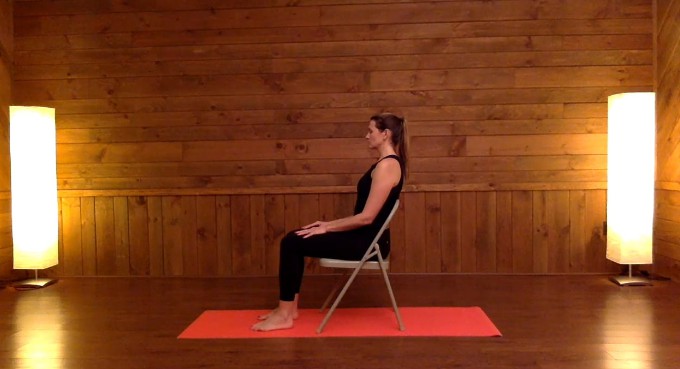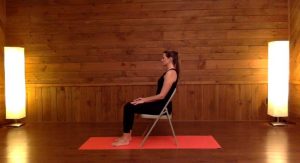Improper posture – both at work and at home – is what causes most neck problems. When positioned right over your body, the average head weighs around 10 pounds, bu for each inch the head moves forward, another 10 pounds in weight is gained. That can put an incredible amount of pressure on your upper back and neck and may result in headaches, neck pain and a stiff neck.
When you have weak neck muscles, your neck is predisposed to getting injured and the changes for suffering postural defect are much more likely. Gravity is displaced by postural defect and pressure is put on the spine in places that it wasn’t designed to physiologically tolerate very well. The neck joints are further distorted when muscles are tight. Effective and simple stretches need to be used in order to hep ease tension in your neck muscles. Those muscles do not get much rest over the course of your daily activities.
We will be reviewing some simple stretches and exercises in this article that are known to help with a number of different chronic neck pain issues. Before starting on any exercise program or neck stretching, you should consult with a health professional first.
Please be advised that you should always perform neck exercises and stretches in a smooth and slow manner. Particularly those suffering from acute neck pain from cervical radiculopathy (traveling neck pain), pinched nerve in your neck, stiff neck or any other serious pain – be sure to perform the motions slowly and initially under the supervision or your therapist or doctor. If you feel a “twinge” or sharp pain in your neck at anytime, immediately stop performing that exercise.
Seated Neck Release
Sit down on the floor cross-legged or in a chair with your feet on the ground flat. Extend out your right arm that is along the right hand side of your chair or next to your right knee. Put your left hand on top of your head and then tilt your head slowly to the left. Use your hand to gently apply pressure to increase the stretch further. You can hold onto to ether the seat of your chair or right knee in order to feel an even deeper stretch. That stabilizes your torso and enable you to isolate the stretch to the side of your neck. This side should be held for 30 seconds, and then left your head up slowly and repeat the stretch on your other side.
Seated Heart Opener
Start out sitting on your heels like you are going into the Reclining Hero pose. Next lean back while putting your palms flat on the floor around 8 to 10 inches behind you with your fingertips pointed away. Firmly press your hands to the ground and lift your chest high, while pushing your hips to your heels and arching your back. Lower your head to increase your stretch, while stretching through your throat and then to the front part of your chest even further. Hold for 30 seconds, and then lift your torso and head up.
Seated Clasping Neck Stretch
Comfortably sit on the floor or in a chair. Clasp your hands and then bring both of your palms towards the back of your head. Sit with a tall spine, and firmly ground your hips to your seat. Then start to press your hands gently down towards your thighs, while your chin is tucked into your chest. As you are pressing down, use the heels on your palms for pulling your head away from the shoulders. That will help to further intensify the stretch. Hold for 30 seconds at least, and then lift your head up slowly while releasing your hands.
Grounded Tipover Tuck
With your forehead and shins on the floor go into the Child’s Pose. Stay there for a couple of breaths, while lengthening your spine while you are relaxing your chest all the way to your thighs. Interlace your hands once you are ready into a double fist behind you. Press together the heels of your palms if you can in order to increase the stretch into your shoulders. Next lift your hands up as high as possible. Inhale in order to shift your weight forward while lifting your hips off of your heels. At the top of your head come to rest while extending your hands as close as possible to the floor. Hold for 10 seconds before lowing your hips to your heels. Then stay there for 10 seconds before lifting up your hips again. Keep doing that cycle five times at least, before releasing into the Child’s Pose. Your arms should be on the sides of your legs.
Bridge
Start out lying on your back flat with your arms at your sides, with palms faced down. Put your fleet flat on the floor and bend your knees. Walk your heels as close as possible to your bum, and keep them hip-width apart. Be sure both of your feet are parallel. Lift your hips up off of the floor, with your feet and palms pressed into the ground firmly. Stay there, or your hands can be clasped together under your pelvis, and extend through your arms. Next rock your weight side to side, bringing your shoulder blades together closer. Stay there for 30 seconds, and continue lifting the hips high. Lower your booty back down to the ground, in order to release the stretch. Then hug your knees to your chest to stretch through to your lower back.
Behind the Back Neck Stretch
Stand with your arms at your side and feet at a hip distance apart. Reach both of your hands behind to your backside, with your right hand holding your left wrist. Gently straighten your left arms with your right hand and slightly pull it away from you. To further increase the stretch in the neck, lower your right ear slowly towards your shoulder. Hold for 30 seconds before switching sides.
Having your condition fully assessed by a health care professional and the appropriate diagnosis being made is the first step towards addressing your pain. After it has been determined that simple stretches and exercises can help your condition, then it is very important that they be performed on a consistent basis. Stretching and strengthening by itself will not make you move or sit in more healthy ways. It is very important to change your damaging functional movement mechanics in addition to performing exercises and stretches. If you ready and motivated to regain control permanently you can improve your chronic neck pain.



